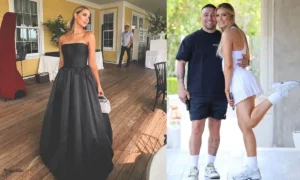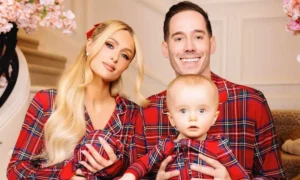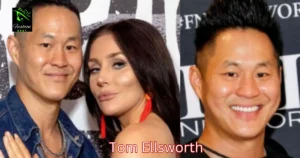Imagine waking up to an important business meeting and feeling a wave of confusion as you stare blankly at your closet. “What on earth is the business wear dress code?” you mutter, rummaging through clothes. Anxious about looking either underdressed or overdressed, you recall a colleague mentioning a simple guide to business attire.
You know it’s essential to make a good impression, but without a clear understanding of the dress code, it feels like navigating a maze blindfolded. You’re determined to learn the ins and outs of business wear to ensure you always look polished and professional.
The business wear dress code is a set of guidelines designed to help professionals present themselves appropriately in the workplace. This code often varies depending on the industry, company culture, and occasion, making it crucial to understand the specific expectations of your work environment.
What Is Business Attire?
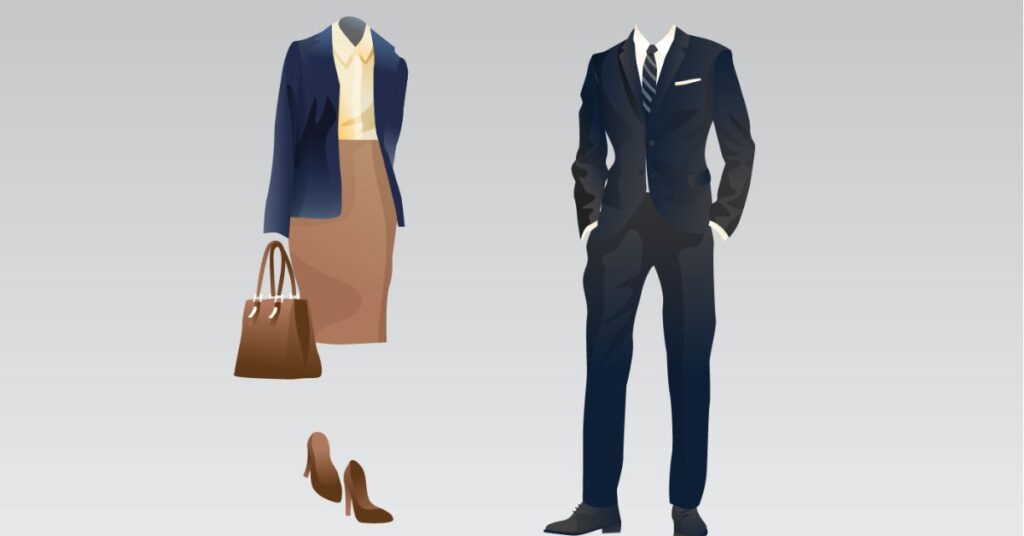
Business attire refers to the clothing that professionals wear in a workplace setting. It is meant to convey a polished and professional image. The exact style can vary depending on the industry and company culture. Generally, business attire includes suits, dress shirts, blouses, slacks, skirts, and dress shoes.
There are different levels of business attire, such as business formal and business casual. Business formal usually means suits and ties for men, and suits or dresses for women. Business casual is a bit more relaxed, allowing for dress pants or skirts with blouses or collared shirts. Knowing the right attire helps you fit in and make a good impression at work.
Read this post also: Are Jeans Business Casual for Women? A Guide to Modern Office Attire
Types of Business Attire
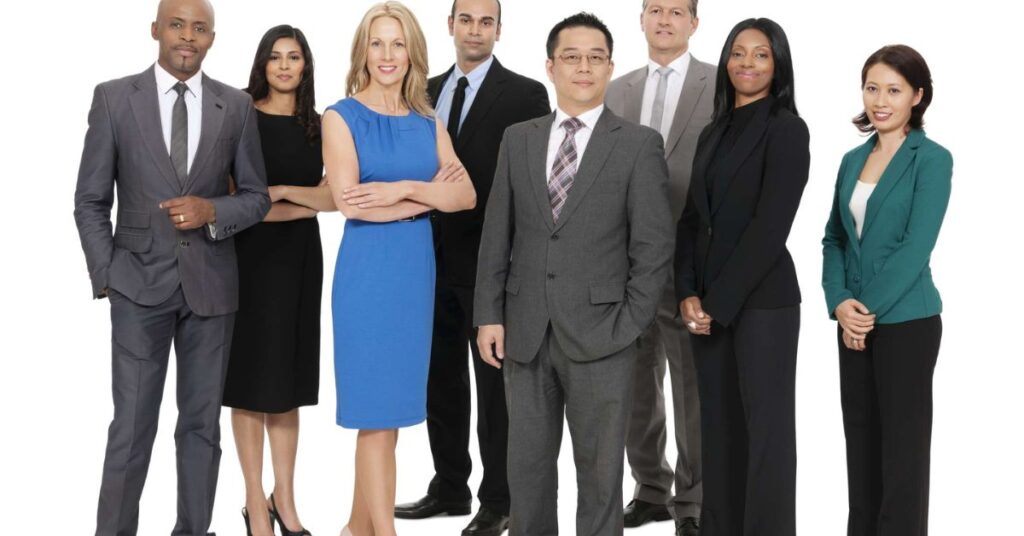
Business attire can be categorized into several types, each suitable for different work environments and occasions. Here are the main types of business attire:
Casual
Casual business attire is the most relaxed form of workplace dress code and is typically reserved for casual Fridays or creative industries. Men can wear jeans or chinos with a polo shirt or a casual button-down. Women can opt for casual dresses, skirts, or well-fitting jeans paired with stylish tops. While casual, the clothing should still be neat and appropriate for a professional setting.
Smart Casual
Smart casual is a versatile dress code that combines elements of both formal and casual attire, striking a balance between polished and relaxed. It allows for personal style while maintaining a professional appearance. Smart casual is appropriate for various settings, such as informal business meetings, social events, or workplaces with a more relaxed dress code.
For Men
Men can wear well-fitted chinos or dark jeans paired with a collared shirt, such as a button-down or polo. A blazer or sports jacket adds a touch of sophistication, and footwear can range from loafers to dressy sneakers. Accessories should be minimal and stylish, like a classic watch or belt.
For Women
Women can choose from tailored pants, skirts, or dark jeans paired with blouses, knit tops, or casual dresses. Adding a blazer or cardigan elevates the look. Footwear options include loafers, ballet flats, or low-heeled boots. Accessories should be tasteful and understated, such as a simple necklace or scarf.
Business Casual
Business casual attire offers more flexibility while still appearing professional. Men might wear khakis or dress pants with a collared shirt, and they can skip the tie. Women can wear dress pants or skirts with blouses or knit sweaters. This type of attire is common in many modern workplaces and is suitable for everyday office wear.
Business Professional
Business professional attire is slightly less formal than business formal but still maintains a high level of professionalism. Men can wear a suit or dress slacks with a button-down shirt and tie. Women can choose a conservative dress or a skirt and blouse combination. The focus is on looking polished and put-together, often with neutral colors and minimal accessories.
Business Formal
Business formal is the most professional and traditional type of business attire. It is typically required for high-level meetings, corporate events, and job interviews. Men should wear a dark-colored suit with a dress shirt, tie, and polished dress shoes. Women should opt for a tailored suit, either with a skirt or pants, and pair it with a blouse, stockings, and closed-toe heels.
Related Post: What to Wear When Hiking in the Summer: A Complete Guide
Determining the Dress Code
Determining the dress code for any event or workplace is crucial to ensure you dress appropriately and make a good impression. Start by considering the nature of the event or the workplace culture. For formal occasions or traditional industries, business formal or professional attire is usually expected. In more modern or creative environments, business casual or smart casual might be acceptable.
You can also seek guidance from colleagues or consult the company’s employee handbook. Observing what others wear can provide valuable insights. When in doubt, it’s better to err on the side of being slightly overdressed rather than underdressed. This approach demonstrates respect and professionalism.
How Has Business Attire Changed Since Remote Work Became Popular?

Business attire has significantly evolved with the rise of remote work. The shift has led to a more relaxed approach to professional dress codes.
Many professionals now favor comfortable yet presentable clothing, such as smart casual outfits, over traditional business formal wear. This change reflects the blending of home and work environments.
Video calls have become a primary mode of communication, making the focus on upper-body attire more prominent. As a result, people often wear professional tops paired with casual bottoms.
The trend towards casualization in business attire is likely here to stay, as companies recognize the importance of comfort and flexibility. This shift also highlights a growing acceptance of personal style within professional settings.
Dressing for Work: Dos and Don’ts
Dos
Do Dress Appropriately for Your Industry: Always consider the norms of your industry. Corporate environments often require business formal attire, while creative fields might be more lenient with business casual.
Do Pay Attention to Fit and Condition: Ensure your clothes are well-fitted and in good condition. Wrinkled or ill-fitting attire can give a poor impression.
Do Keep It Simple and Classic: Opt for timeless pieces that convey professionalism, such as blazers, dress shirts, and tailored pants.
Do Accessorize Tastefully: Choose accessories that complement your outfit without being too flashy. Simple watches, belts, and jewelry can enhance your look.
Do Maintain Good Grooming: Personal hygiene and grooming are essential. Clean, neat hair and nails, and a well-maintained appearance, show attention to detail.
Don’ts
Don’t Wear Inappropriate Attire: Avoid overly casual clothing, like t-shirts, shorts, or flip-flops, unless your workplace explicitly allows them.
Don’t Overdo Perfume or Cologne: Strong scents can be distracting and overwhelming. Opt for a light, subtle fragrance if you choose to wear one.
Don’t Ignore Company Policies: Always adhere to your company’s dress code policies. If in doubt, ask HR or a supervisor for clarification.
Don’t Wear Distracting Clothing: Bright colors, bold patterns, or revealing clothes can divert attention from your professionalism. Stick to more conservative and neutral tones.
Don’t Neglect the Details: Small details like polished shoes, matching socks, and a clean appearance contribute significantly to your overall look. Don’t overlook them.
Frequently Asked Questions
What is business formal attire?
Business formal attire typically includes a dark-colored suit, dress shirt, tie for men, and a tailored suit or dress for women.
How does business casual differ from smart casual?
Business casual is more professional, involving dress pants or skirts and blouses, while smart casual blends relaxed and polished styles like chinos and collared shirts.
Can I wear jeans in a business casual environment?
Yes, in many modern workplaces, well-fitting dark jeans are acceptable as part of a business casual outfit.
What should I avoid in business professional attire?
Avoid overly casual items like t-shirts, shorts, or flip-flops, and stick to more conservative and neutral tones.
How has remote work influenced business attire?
Remote work has made business attire more relaxed, with professionals favoring comfortable yet presentable smart casual clothing.
Conclusion
Understanding business wear dress codes is essential for making a positive impression in any professional setting. By recognizing the different levels of business attire and adapting to the specific expectations of your industry, you can navigate your wardrobe choices with confidence. Whether it’s business formal, business casual, or smart casual, dressing appropriately reflects your respect for the workplace and boosts your professional image. As remote work continues to shape dress codes, maintaining a balance of comfort and professionalism remains key.




